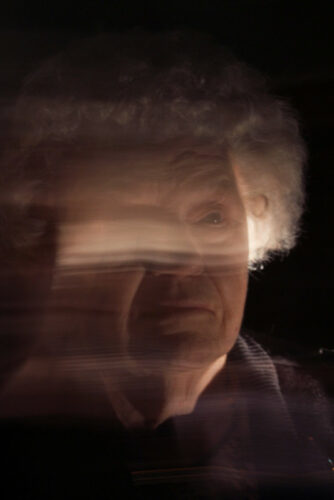Image Courtesy of Flickr.
Imagine progressively losing the memories you cherish deeply, eventually no longer being able to learn new things, read and write with ease, or recognize loved ones. People with Alzheimer’s, a form of dementia, lead lives with these worsening symptoms. With no cure and a short lifespan after diagnosis, Alzheimer’s is a devastating, progressive neurological disorder that affects memory, behavior, motor skills, and thought processes.
Initially, scientists could only diagnose Alzheimer’s by performing an autopsy after death. Since then, many advances have been made. Clinicians can now detect early signs using remarkable technology, such as positron emission tomography (PET), a type of diagnostic technology used to show the metabolic activity of the brain, and various tests on cerebrospinal fluid (CSF) — the clear, watery fluid around the spinal cord and brain. Some hallmarks include decreased glucose uptake and the accumulation of beta-amyloid plaques, proteins that aggregate between neurons and disrupt their normal function. However, these methods can be quite invasive. For example, a PET scan requires the injection of radioactive material into the bloodstream, and the extraction of CSF involves inserting a needle into someone’s back. These diagnostic tools are uncomfortable and expensive, making these procedures inaccessible to many people.
Alzheimer’s is characterized by plaques of beta-amyloid in the brain, yet new evidence suggests these plaques also accumulate in the retina. The retina, which is closely related to brain tissue, is routinely examined to detect eye diseases through a process called fundus photography or digital retinal imaging. A similar technique may soon provide a non-invasive and cost-efficient method of identifying early signs of Alzheimer’s.
Robert Vince, Swati More, and their colleagues at the University of Minnesota discovered a technique called hyperspectral imaging. They used the technique to detect clumps of beta-amyloid in mouse retinas at the early stages of the disease. In hyperspectral imaging, standard eye examination equipment, like an autorefractor, is combined with a hyperspectral camera—a special camera that captures light from across the electromagnetic spectrum. Then, artificial intelligence compares the data-rich images with other images with similar physical properties associated with Alzheimer’s disease.
Clinical trials are currently underway across North America to test the efficacy of this technique, and there have already been promising results. In a cohort of 108 participants who were either at risk of Alzheimer’s or already had preclinical Alzheimer’s, the technique correctly identified people with beta-amyloid plaques in their brains eighty-six percent of the time. PET scans and CSF results validated these retinal screening tests. They also observed beta-amyloid clumps in the brain at later stages, suggesting that the presence of beta-amyloid plaques in the retina may also be an early detection marker in humans.
Though these results are promising, more studies with diverse participants and larger cohorts are needed before physicians can use this technique as an official diagnostic tool. Moreover, some researchers have noted that amyloids can be present in the retinas of people that do not develop signs of cognitive decline.
While there are issues with this technique that need to be resolved, early detection of Alzheimer’s using retinal imaging has the potential to become a widely-used diagnostic tool. Other retinal signs may help with the early detection of Alzheimer’s, including retinal thickness and changes in blood vessels. A longitudinal trial called Atlas of Retinal Imaging in Alzheimer’s Study (ARIAS) is examining these retina-based biomarkers in hopes of improving the early diagnosis of Alzheimer’s. This project is still in the recruiting phase, but if proven successful, researchers may seek to develop more types of retinal-based tests. Earlier treatment of Alzheimer’s may alleviate symptoms and help scientists better understand the pathogenesis of this condition with the hope of developing a cure.

